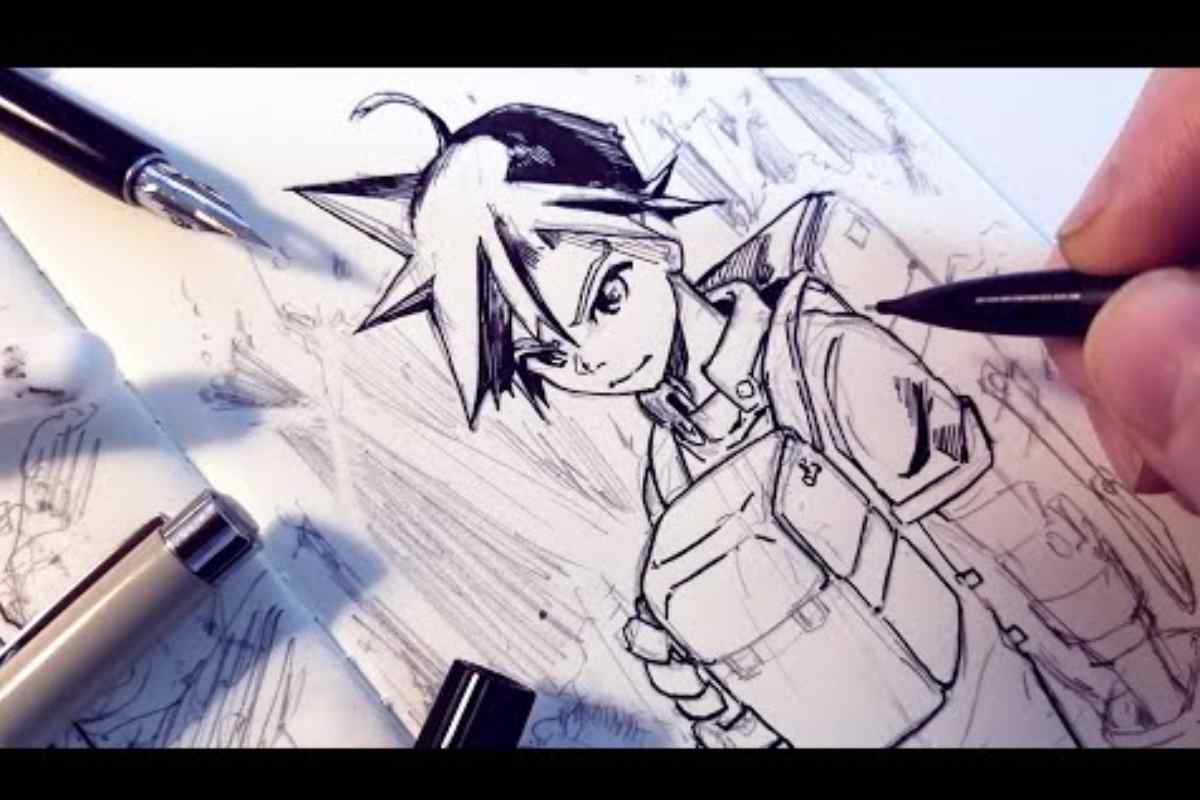Drawing:S1kp8kpr6qs= Anime
Hi, Today we are going to talk about Drawing:S1kp8kpr6qs= Anime. So, let us get Started.
Sketching an Anime Body
- Draw a stick-figure outline of your character’s body. Use straight lines for the arms, torso, and legs.
- Outline the general shapes of your character’s body.
- Connect and refine the general shapes you drew.
- Erase the stick-figure outline and shapes you drew.
- Add your best anime character’s clothes.
Drawing:s1kp8kpr6qs= Anime: Essential Techniques for Drawing Captivating Characters
Creating captivating anime characters requires understanding fundamental techniques that give anime its distinctive look. Here are essential approaches for developing your anime art skills:
Character Proportions
Anime characters typically feature stylized proportions with larger heads (about 1/3 to 1/4 of total height), large expressive eyes, small noses and mouths, and slender bodies. Mastering these proportions creates the iconic anime aesthetic.
Expressive Eyes
Eyes are the heart of anime character design. Practice drawing large, reflective eyes with detailed irises, highlights, and expressive shapes. Different eye styles can convey personality—round eyes for innocent characters, narrow eyes for mysterious ones.
Dynamic Hair Styling
Anime hair defies gravity and uses simplified shapes to suggest volume and movement. Focus on creating distinct silhouettes and flowing lines rather than individual strands. Hair often defines a character’s personality and should be designed thoughtfully.
Facial Expressions
Develop a repertoire of exaggerated expressions from subtle emotion to dramatic reactions. Anime uses simplified line changes around eyes and mouth to convey powerful emotions effectively.
Clean Linework
Anime art relies on confident, clean lines of varying thickness. Practice creating smooth, deliberate strokes with thicker outlines for character contours and thinner lines for internal details.
Simplified Clothing
Master the art of suggesting fabric through minimal but strategic folds. Clothing should enhance character design without overwhelming it, using clean lines to suggest texture and movement.
These foundational techniques will help you create captivating anime characters with authentic style. Remember that consistent practice is essential for developing your unique approach to anime art.
Anime Drawing Girl / Step By Step / Anime Drawing Girl Half Body Watch
If you’re looking for a step-by-step guide for drawing an anime girl (half body), here’s a breakdown of the process:
Step 1: Basic Structure
- Start with a circle for the head
- Draw a vertical guideline down the center of the face
- Add horizontal guidelines for the eyes, nose, and mouth
- Sketch a simplified torso shape (narrower shoulders, wider hips for feminine proportions)
Step 2: Facial Features
- Draw large, expressive eyes positioned on the eye guideline
- Add a small nose (often just a simple line or dot in anime style)
- Create a small mouth with minimal detail
- Position the ears aligned with the eyes and nose
Step 3: Hair Structure
- Outline the basic hair shape around the head
- Consider the hairstyle – common anime girl styles include long straight hair, twin tails, or short bob cuts
- Add volume to the hair rather than drawing individual strands
- Draw hair framing the face with bangs or side-swept styles
Step 4: Upper Body
- Refine the neck and shoulders (typically slender for anime girls)
- Add the basic shape of clothing (school uniform, casual wear, etc.)
- Consider the pose – slight angle of shoulders or a turned head creates more dynamic composition
- Include simple hand position if visible (hands can be simplified or partially hidden)
Step 5: Details and Refinement
- Add details to the eyes (highlights, iris detail, eyelashes)
- Refine the clothing with folds, seams, and textures
- Clean up guidelines and strengthen final lines
- Add accessories like hair clips, ribbons, or jewelry if desired
Step 6: Inking and Finishing
- Trace over your final lines with more confidence
- Vary line weight for depth (thicker lines for outer contours, thinner for details)
- Erase all construction lines
- Add basic shading or leave clean for coloring later


